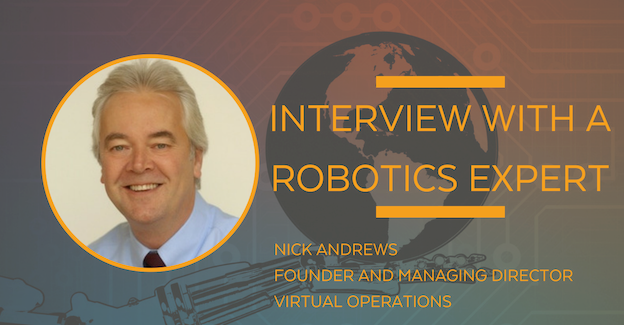Why do you think we are increasingly reading statements like “RPA is dead”?
In general, we have seen far less success in the industry than initially expected, especially with regard to achieving
scale and desired levels of ROI. For example, Deloitte has reported that less than 5% of organisations have effectively scaled their RPA operations. Delivery costs often exceed benefits. As a consequence, we see focus shifting to alternative technologies, in the mistaken belief that this will unlock true automation potential.
What do you think has led to this situation?
An explanation for what we are observing is that most companies just don’t have the scale potential for simple approaches to work; those that do usually don’t have the correct approach to unlock it.
The “success” stories that we hear about are often the result of a misrepresentation of statistics – large organisations saving thousands of FTEs, when in fact this represents less than 1% of the workforce.
Their approach is often flawed not only by restricting benefit drivers to pure productivity/headcount reduction but also by placing an excessive focus on cost, rather than benefits at all. This drives behaviours such as offshoring discovery, implementation and support, which in turn deliver low-value automations.
Do you think we’ve really reached the limits of RPA?
No – in almost all cases,
RPA has not yet been fully exploited. A user may feel that RPA has reached its limit within their organisation as a result of seeing the type of unsatisfactory results mentioned previously, whereas they have not applied an approach that would yield far higher benefits whilst still only focussing on RPA alone.
There is a place for augmenting tools, but this should be dictated by the approach; in a successful automation program, we would expect these to play a part of a more strategic automation deployment, focusing on digitisation of the end-to-end journey.
Ultimately, tool selection should always be based on fulfilling a purpose rather than on appeal.
So what would you say to a client who told you “RPA didn’t work for me” or “I’ve already taken RPA as far as I can”?
We should consider what is driving these statements: is ROI perceived as too low? In this case, we should shift the focus onto potential benefits – if cost is the limiting factor then the wrong opportunity has been selected. It is worth bearing in mind that even if we were to stick to a “typical” tactical, FTE-based business case, to break even in less than one year we only need to find and automate one to three FTEs. Whether this is worthwhile at all is questionable, but a significant number of projects at this level might prove the technology works, provide experience and confidence, and give momentum for more complex initiatives. Focussing on benefits means cost becomes irrelevant and ROI becomes the driving factor.
If the client has a more transformational result in mind, then they need to understand that if RPA isn’t changing the landscape, then it’s highly unlikely that applying another technology will lead to greater benefits. Automation should always be considered as a tool in a broader business optimisation initiative, which should be guided by a combination of internal process and strategic corporate goals, and highly experienced automation specialists; both sets of skills and experience are vital to success. These are known as “joint agility teams.”
There are additional key enablers that should not be overlooked – the absence of any one of these can be make or break an automation program. We would always advise a client to ensure these bases are covered to ensure success, before considering whether they have truly extracted all the value they can from RPA. Firstly, C-level sponsorship is a necessity in order to overcome internal resistance, which will always manifest even if the programmes become self-funding.
Business case progression is also critical; automation programs should start with a series of short projects, then increasingly initiate more complex, transformation and higher reward projects (“start small, think big, move fast”). To maintain momentum, it is essential that each project has a compelling business case and that the benefits are tracked and widely known, especially at the C-level.
Do you think an RPA-focused approach is still the best place for a beginner to start?
Yes – but we would re-iterate that this needs to be part of the bigger picture, whether as part of Process Excellence, as a Digital Enterprise enabler, or as a strategic weapon either to attack business problems (such as optimising supply chain, or regulatory compliance), or meet business objectives (improving customer experience is a prime example).
RPA should pave the way to utilising additional tools and technology. It is likely that a user will need to augment their RPA tools with emerging technologies at some point as they move through the stages of automation maturity, from tactical horizontal opportunities contained within a single function, through a tactical vertical scope involving external interfaces – including customer-facing – and eventually on to strategic horizontal and ultimately, strategic vertical transformation.
Which tools/technologies do you think are currently providing the most value to clients? How do they fit with RPA?
It is important to remember that RPA is still the core Industry Automation tool and will continue to be for a few more years. The leading RPA tool providers have started to build in supporting functionality enabling data digitisation and E2E processing with RPA at its centre, including Machine Learning, Simple AI, Natural Language Processing, Robotic Desktop Automation and others, and this will continue.
We would always recommend adopting a “platforms not products” mindset. Avoid tool selection as the first step and consider how the tool requirements will be determined by process types, operational structure, objectives, budget and systems to be accessed. Encourage internal buyers to define business drivers and alignment to other digital initiatives and use external advisors to down select and develop RFP. Other considerations to bear in mind are Cloud vs On-Premise hosting options and increasing flexibility with regard to licencing options.
So to confirm, we would advise clients to meet their immediate needs with the right tools, then optimise their approach, and bring in appropriate tools as required?
Yes, and it is important to understand that if initial business objectives, budget and process characteristics dictate, we may need to utilise a range of tools from the outset.
What are the most important factors to consider for a client selecting a partner who can help them with their post-RPA journey?
In order for users to extract maximum value from the application of RPA (and supporting) tools, they should seek to work with an experienced partner able to de-risk the approach I have outlined, especially during the early stages of their automation journey. They should be able to demonstrate an approach that ensures the right business case progression, pipeline building and scaling where appropriate, and selection of the appropriate tool to deliver the required outcomes. Ideally, the partner will be able to set the organisation on a course to full enablement and sustainability by embedding this approach as best practice.
Services provided should also align to the automation lifecycle, covering Strategy, Implementation, COE Build and Production Support.







